Classes | Who Excels at Nose Work | Scenting Skills | Instructor | Magic of Nose Work | Nose Work Resources
Nose Work
Also known as canine Scent Work, this sport leverages your dog’s natural sense of smell and turns it into a game the two of you can play together just about anywhere. Nose Work classes reinforce your dog for finding the location of specific odors and how to communicate to you where it is.
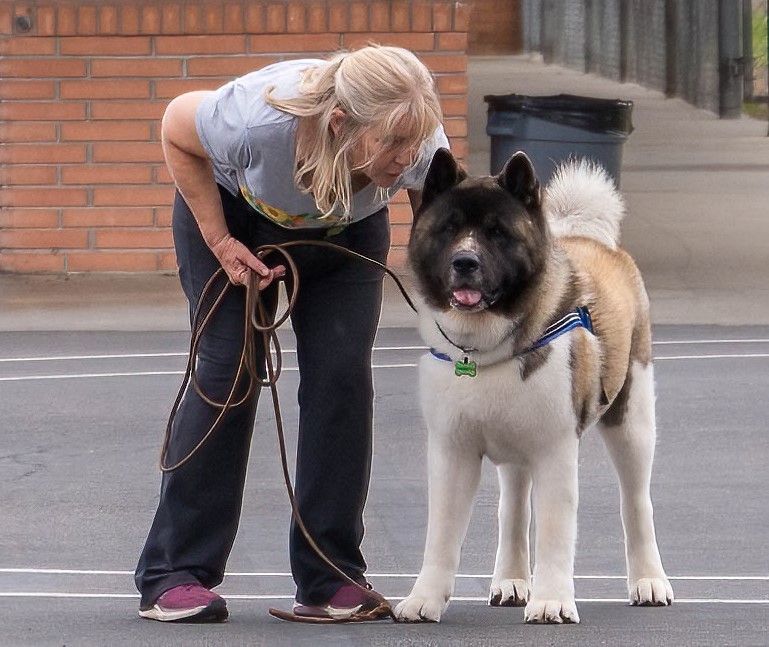
This is a fun game that does not require a lot of equipment or prior training for either you or your dog. This game can be done for fun and enrichment and is an excellent activity for dogs who are older, shy, or reactive around other dogs and even for deaf or blind dogs. For those of you who get bit by the bug to compete in this sport, there are several organizations that present competitions to test your dog’s odor-detection skills and your team’s communication skills.
About Nose Work
NACSW-Certified Instructor (CNWI)
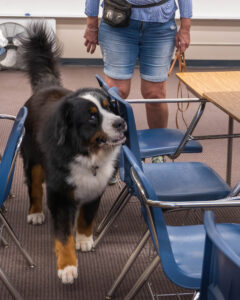
Whether you choose to train to compete in this very popular sport or train for your dog’s mental and physical enrichment, DogPACT classes are taught under the guidelines established by the NACSW, the largest Nose Work association in the United States. Our instructor, Jean Morris, is certified by the NACSW and is actively involved in the sport, competing with her own dogs, volunteering at events, and promoting this fun canine sport. As the sport has grown, other organizations have joined the party, and Jean is well versed with the differences among them.
Limited Enrollment

DogPACT believes that the best learning takes place when students receive more one-on-one instruction. The best way to do this is to limit the number of students in a class. Each class lasts up to 90 minutes which, together with limited enrollment, ensures that each team gets plenty of personalized instruction and several working sessions in each class.
Dogs are worked individually while other dogs in class are in their crates. This “down time” gives dogs a mental break while also assuring that dogs who do not like other dogs near them are given a place to rest without other dogs running loose. Down time between each dog’s working time also gives handlers the option to watch other dogs work and observe how the instructor works with each team.
When/Where
Classes in the sport of Nose Work often have teams with different skill levels since everyone learns at a different rate and the instructor tailors the searches to each team. Thus, when you enroll in a class, we fit you and your dog in the class that best fits your level, but expect that there will be different skill levels in your class. This ends up enhancing your learning experience since you can watch different teams resolve different search challenges.
Huntington Beach, CA
Grace Lutheran School
5172 McFadden Avenue
Sundays: There are three classes that run between 4 p.m. and 8:30 p.m.
Lomita, CA
Wayside United Methodist Church
25904 Cayuga Street
Mondays: There are two classes, one at 4 p.m. and one at 6 p.m.
Cost: Each series of 6 limited-enrollment group classes is $170.00. There are terms and conditions. Please contact us for more information.
Prerequisite: Permission of the Instructor, based on your and your dog’s current skills and training needs.
If you are interested in enrolling in either class location, please Contact Us.
Equipment & Supplies Needed for Class
Rewards

Either toys or treats can be used. In the initial stages of training, dogs are encouraged to find a favorite toy or treat. Choose toys and treats that are especially enticing to your dog. Bring lots and lots of treats, cut into very small pieces. Don’t forget to bring water for you and your dog, too!
Target Odors
During the beginning stages of training, your instructor will provide everything you need other than your toys and/or treats.
Later, when odor is introduced, small bottles of the target odors (essential oils), small cotton swabs, and containers into which the scented swabs are placed are all that is required. These materials can be purchased online. See Nose Work Resources.
Crate, Harness, and Leash/Longline
Crate — Dogs are crated in your car when they are not working. Bring a crate that your dog is comfortable in (e.g., soft-sided, plastic, or wire). If your dog will settle in your car without a crate (no barking, whining, agitation), that is okay. It is important for your dog to rest in between his/her turns working.
Harness and Leash — A flat buckle collar can be left on your dog, but a non-restrictive harness, in addition to a 6′-foot’ leather, cloth, or nylon leash or a 12-15′-longline are required. No choke chains, pinch collars, or retractable leashes are allowed. More information about equipment will be provided by your instructor. Nose Work Resources.
The most attractive thing about this sport is the broad array of dogs and handlers who can do it. In essence, if your dog has a nose, he can play this game. You don’t need a specific breed or mix of dog to do well in Nose Work. Anyone who takes their dogs on a walk knows the allure of all the fascinating smells dogs encounter that we are clueless about!
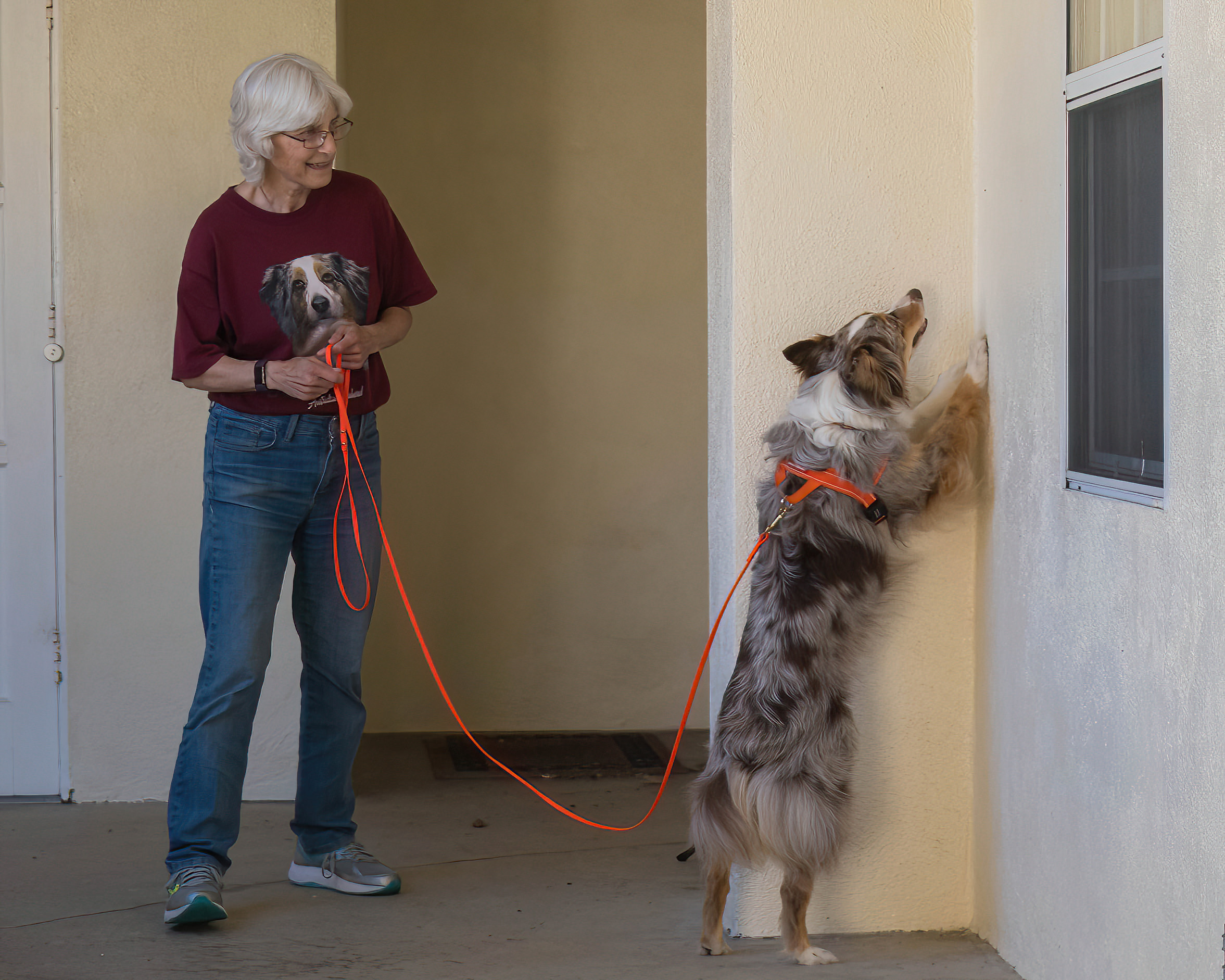
Penny, an Australian Shepard, shows Fran where the hide is located

Gertie and Carolyn sharing the love of Nose Work

Eliza, a Tibetan Spaniel, alerting to Gabrielle the location of the hide
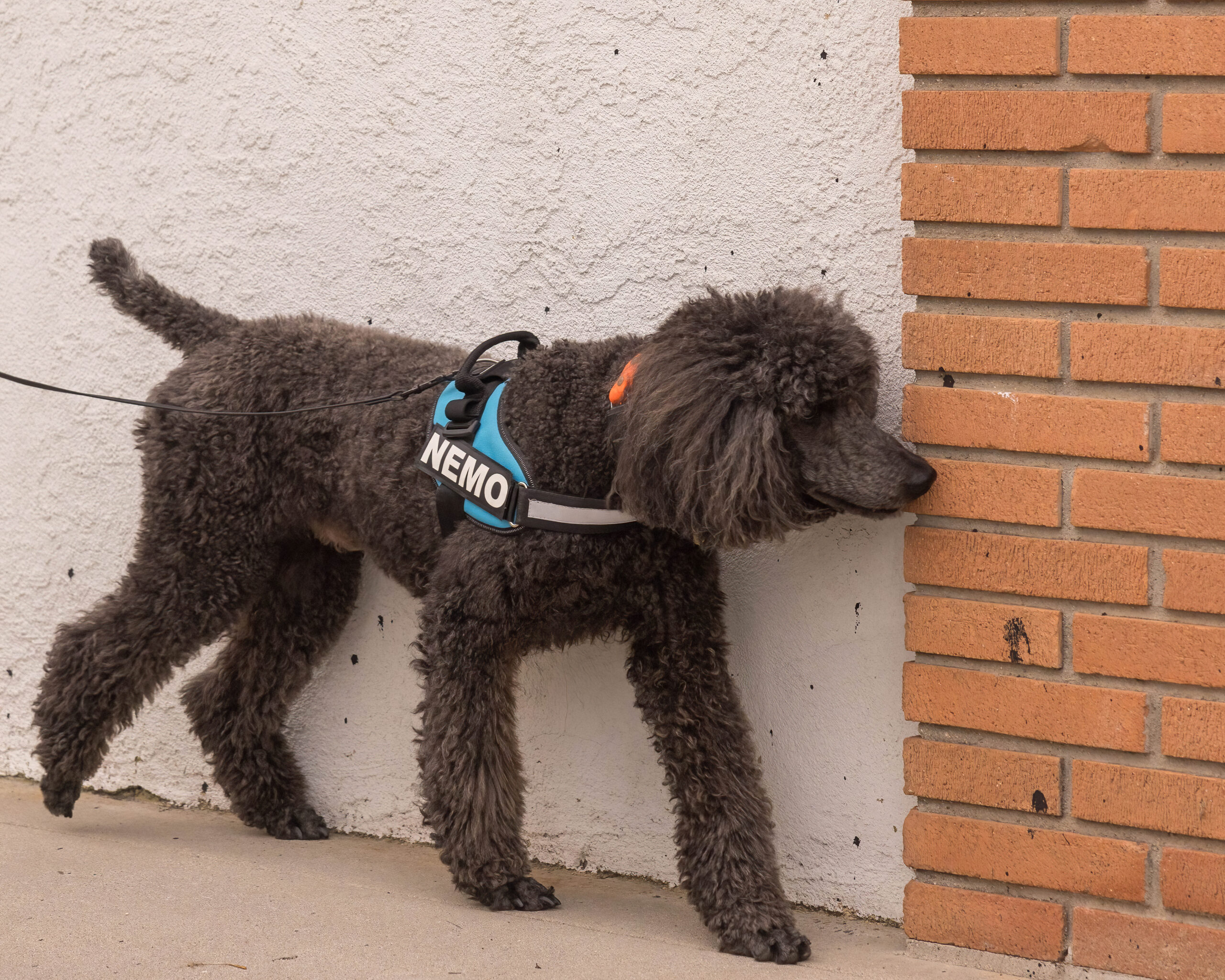
Nemo, a Standard Poodle, tracking odor along the wall

Jessie, a female Golden Retriever, cuteness personified, alerts to source
Even dogs who don’t get along with other dogs, are fearful of the real world outside their front door, and dogs who are easily distracted in traditional group classes do well in Nose Work classes. This is because each dog is worked separately while his/her classmates are crated away from the working area. This allows each dog to concentrate on the task at hand instead of other, often overwhelming, environmental stressors. Handlers can relax, too, and build their own confidence and have fun without worrying about anyone else. What about high-energy dogs who have trouble concentrating during training for other sports or basic manners at home? Yep, Nose Work training helps them focus and stay engaged for longer and longer.
Handlers for this sport come in all sizes and shapes as well. Physical fitness and fancy footwork are not critical to this sport as they are in some other dog sports such as agility, obedience, disc dog, or musical freestyle. This makes Nose Work accessible to many dogs and their people. In essence, Nose Work simply requires a human team member who enjoys seeing their dog have a good time. The most strenuous part of beginning Nose Work training is following behind your dog as s/he is working a scent. As your dog becomes more confident in hunting, you will need to hustle to keep up.
Again, dogs of any breed, size, temperament, mobility, and age are encouraged to give it a try. Dogs love the sport because we are not “training” them to do anything; rather, we encourage them to use their innate ability to find sources of odor that are often undetectable to their human handlers.
Nose Work incorporates the same training principles used to train drug- and explosive-detection dogs. The “training” comes in teaching the human how to read what our dogs are trying to communicate to us. This creates a stronger connection with your dog because your dog and you work together as a team. Your dog is motivated by engaging in a fun activity with you and getting rewarded for what comes naturally, and you are learning how to have a “conversation” with your dog as you learn to understand how they communicate.
Prerequisites
If your dog has ever shown aggression towards people, this may not be an appropriate class since the instructor will be in close proximity to you and your dog. Contact us for more information.
Overview
At the beginning levels of training, dogs are encouraged to “find” treats in a box. Lavish praise, eating the treats in the box, and more treats from you reward the dog for his efforts. Later, the treat is hidden in a box among other empty boxes, and your dog is rewarded for finding the box that conceals his goodie. You can use a toy instead of treats; however, treats are much more commonly used due to the speed at which each reward can be delivered so that you can move on to the next search. However, with practice, you can use a toy if your dog has been trained to release the toy and quickly get back to work.
Once the dog gets hooked on the game of “find it” for treats in the box, an essential oil such as birch, anise, clove, cypress, and others is used. A minuscule amount of one of these essential oils is placed on a very small cotton swab and placed in the box with the treats. This is the stage called “pairing” food with odor. The dog learns that the treats comes in packages with this new, distinct scent. Gradually, dogs learn to find the scent all by itself in a container and are rewarded by the handler for finding the scent. This essential oil is then placed in more and more challenging locations for your dog to find.
As dogs learn to play the game, handlers learn how to closely observe their dogs so they know when their dog has found the scent. This “indication” or “alert” behavior is an important part of the communication process between dog and handler since handlers will use their individual dog’s unique behavior to know when to start rewarding their dog for “indicating” their find.
The difficulty of the game increases as the odors are hidden out in the real world where the air moves in different ways and, in vehicle searches, in the wheel wells, bumpers, and doors of parked cars and trucks.
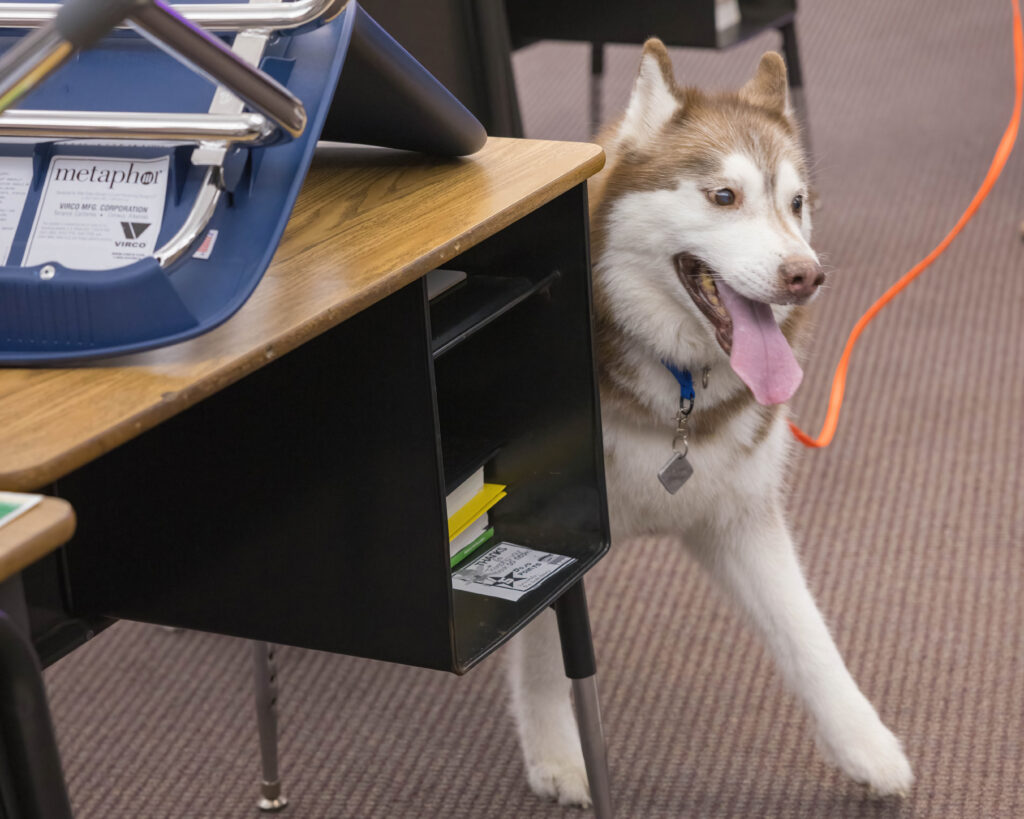
Brooklyn, a Siberian Husky, shows his enthusiasm in the search 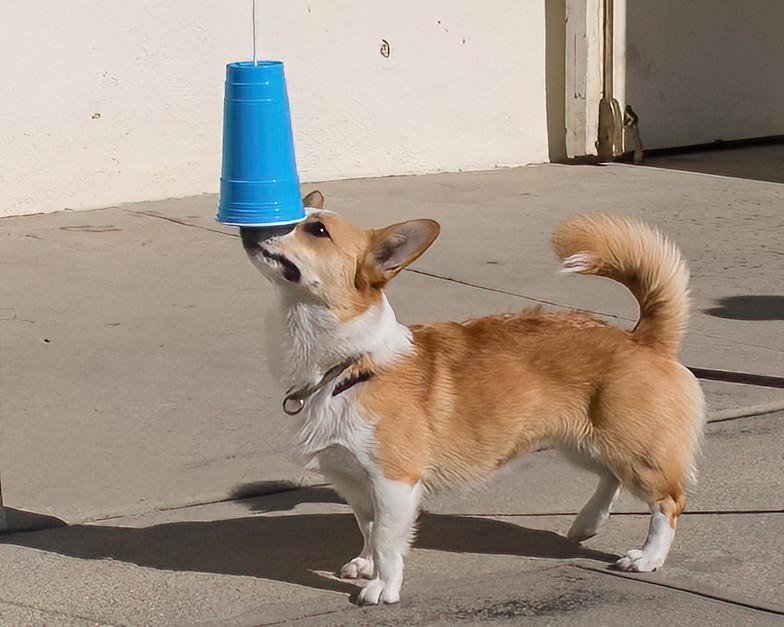
Sadie, a female Corgi, alerting on odor 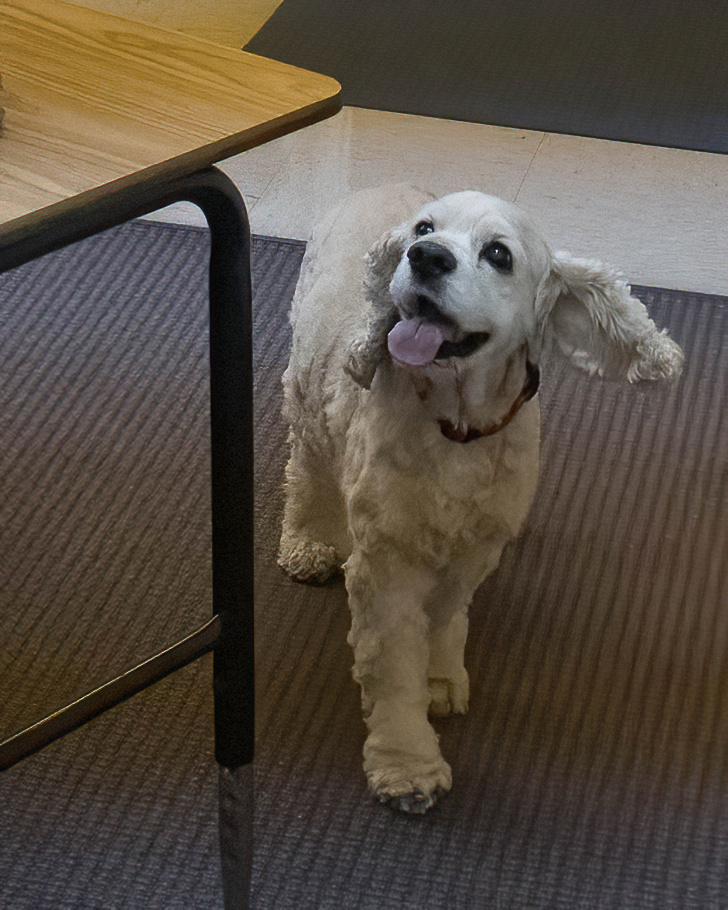
Loki, a Cocker Spaniel on the search for the odor source 
Henry, a Bernese Mountain Dog, searching for the source of the odor 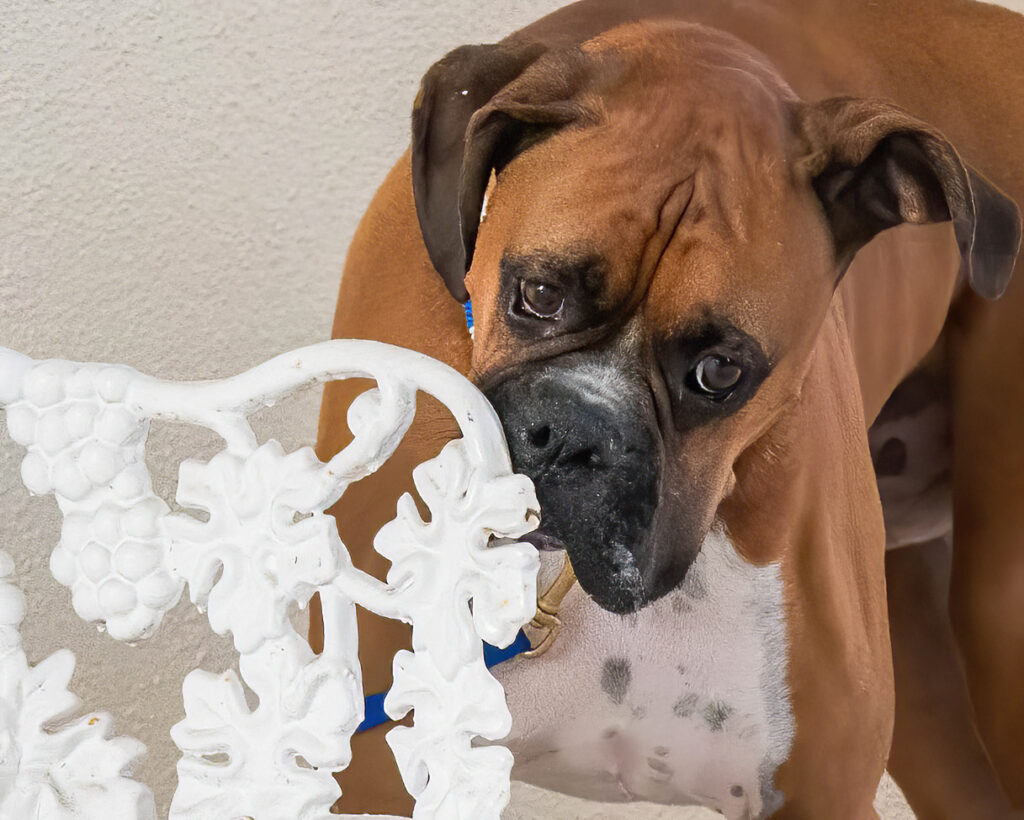
Lucky, a 3-year-old male Boxer, at source
Stages of Training
Your Dog’s Introduction to Nose Work
DogPACT’s NACSW-Certified Nose Work Instructor tailors your dog’s learning progression based on building solid foundation skills before introducing more challenging scenarios. At this foundation stage, focus is on building enthusiasm in dogs for finding their toy or treats, hidden in an obvious place such as a cardboard box. A lot of praise and generous rewards are used to encourage your dog to continue to use his nose to find the treasure. At first, there are just a few containers used, and your dog uses her nose to discriminate between boxes without treats and the one with the prized treat/toy. As learning progresses, the number of the containers increases, as well as their location. It is during the introductory foundation stage that dogs develop the keen desire to hunt.
Introducing Your Dog to Odor
The essential oil of birch is introduced by “pairing” this odor with the treat/toy hidden in a container. Pairing is continued until treats are reduced or eliminated, and the dog is eagerly hunting for the odor alone. The difficulty of the “hides” is increased by changing the location of the containers as well as placing the odor in indoor (“interior”) and outdoor (“exterior”) locations without using containers. The challenges increase, but so does the fun!
Adding More Odors to the Searches
Continuing classes leverage the dog’s understanding of using his nose to find additional odors of anise and clove. At the beginning, the target scents are in easy-to-find locations and as skills develop, they are hidden in more difficult locations with progression in subsequent sessions to strategies and skills needed to find target odors in four different “elements” (interiors, containers, exteriors, and vehicles).
Instruction is tailored to the needs of students. The desire to hunt always trumps the human desire to make things more difficult too soon!
Advancing Your Dog’s Skills
Advanced skills include hides of two or three target odors, and the difficulty of the hides increases. The odor may not be directly accessible, and handlers are taught how to “read” their dogs, watching for their dog’s “alert” or “indication” to where the source of the odor is even if they can’t reach it! Handlers learn how variable environmental factors (such as the weather, converging odors, and distractions) contribute to the dog’s ability to indicate the actual “source” of the odor, and to eliminate “false alerts” when the dog thinks they might have found it, but aren’t quite sure. This skill level prepares those who want to compete in the sport for the challenges of competition.
JEAN MORRIS, CNWI

Jean has taught K9 Nose Work for DogPACT since 2015. She started her journey in K9 Nose Work in 2009 and quickly became impassioned with the training, the people, and the “culture” of Nose Work. “It is a beautiful thing to catch a glimpse of how our dogs see the world.”
Jean’s dog, Gremmie, was the first Bernese Mountain Dog to achieve the coveted NW3 Elite title. And in May of 2015 Jean and Gremmie had the honor and privilege of competing in the NACSW National Invitational Championships in Loveland, Colorado.

Jean has lived with a variety of animals all her life. In the late 1990’s she began training her Bernese Mountain Dog, Niekko, in obedience. Growing frustrated with the traditional, rather old-school, training styles, she began learning clicker training and other positive, motivational training techniques. These tools opened the door to the world of competitive dog sports. Over the years she has competed and earned advanced titles in conformation, Rally, obedience, herding, draft, agility, and K9 Nose Work.
Jean has a BS in Animal Science from Cal Poly San Luis Obispo and an MS in Oriental Medicine. She practices Acupuncture and Functional Nutritional Medicine in Redondo Beach, CA.
Jean currently competes with her Bernese Mountain Dog, Nalu, in Nose Work, Carting, Rally and, the hardest sport of all, raising a new puppy.
Fin is a precocious puppy whom Jean is raising to be her next great sport dog and best buddy.

The Way It Happens
Sasha, The Malinois
Showing the beginning of the search, hunting for the specific location of the odor, through alerting her handler.
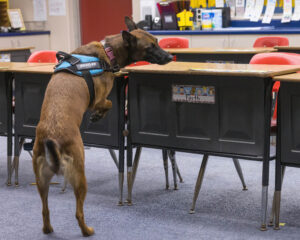


More moments of the magic of Nose Work as the dogs work with their handlers

Ally, a 3-year-old Dogo Argentino, sharing a moment with Breen
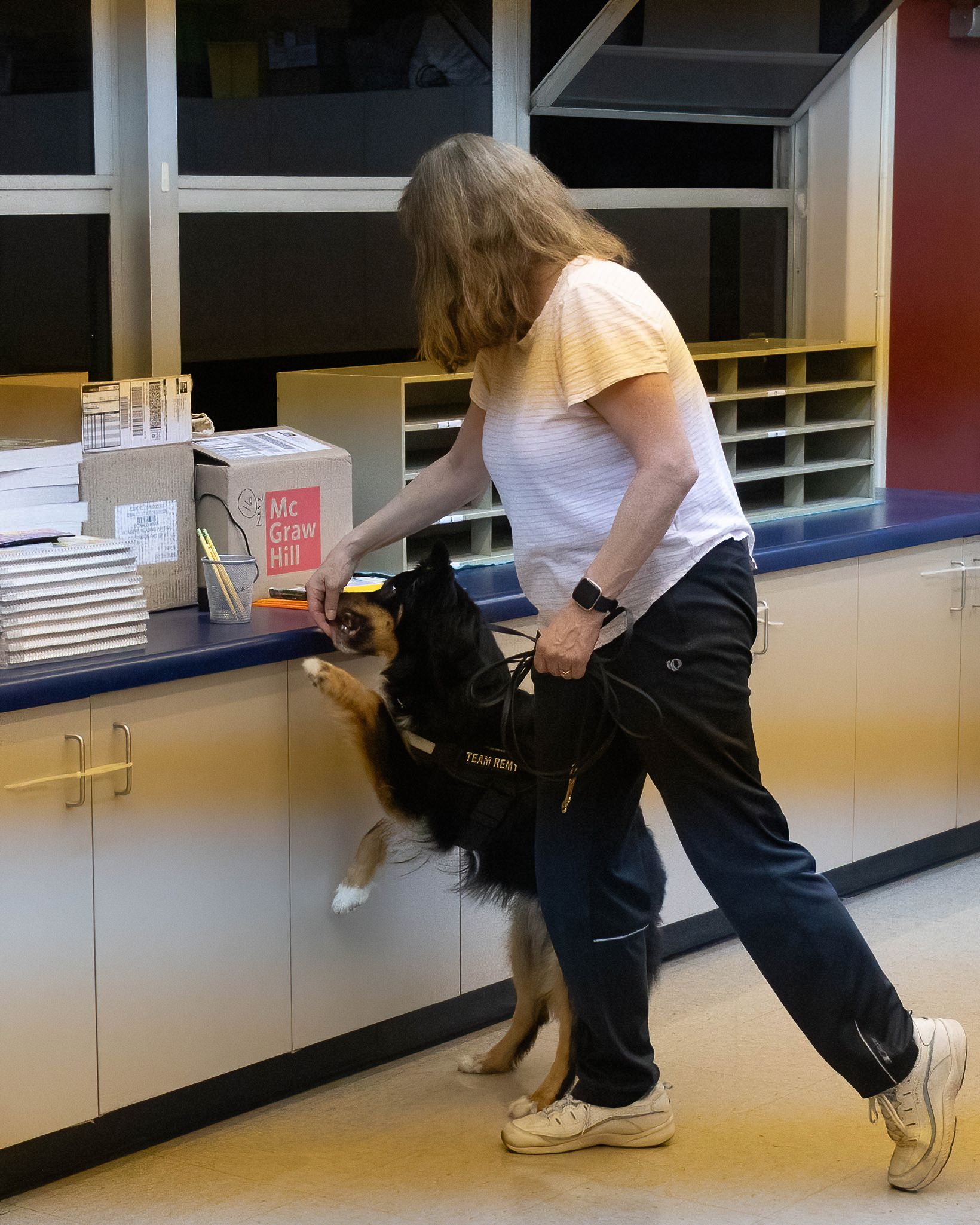
Remy, a male Australian Shepherd, rewarded at source by Elizabeth

Miko, a 10-year-old female Shiba Inu, celebrating the search with Jerrianne
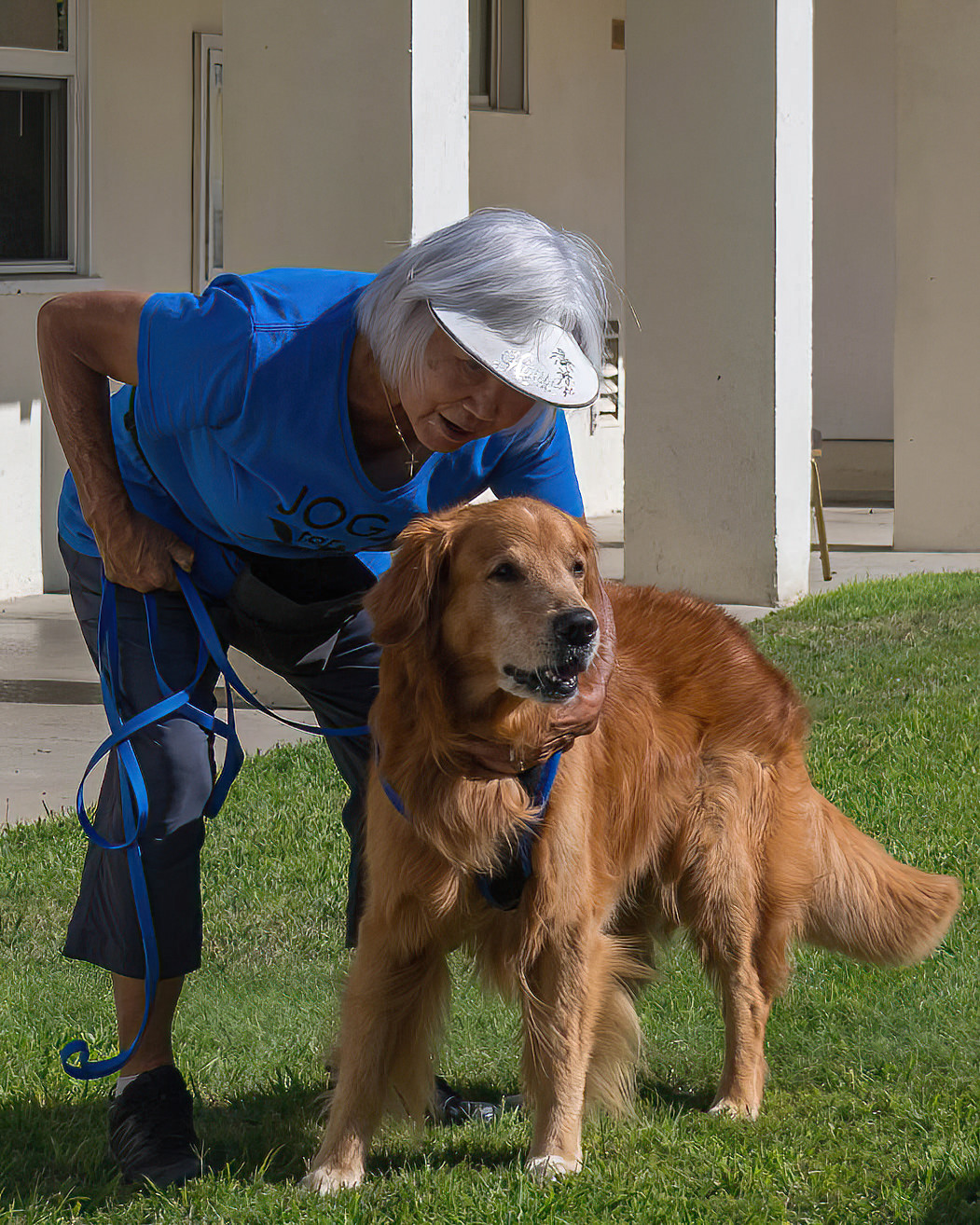
Koa, an 8-year-old male Golden Retriever, excited to start the search with Joanne

Honey, an 8-year-old Mini Dachshund mix, reaches to alert at source
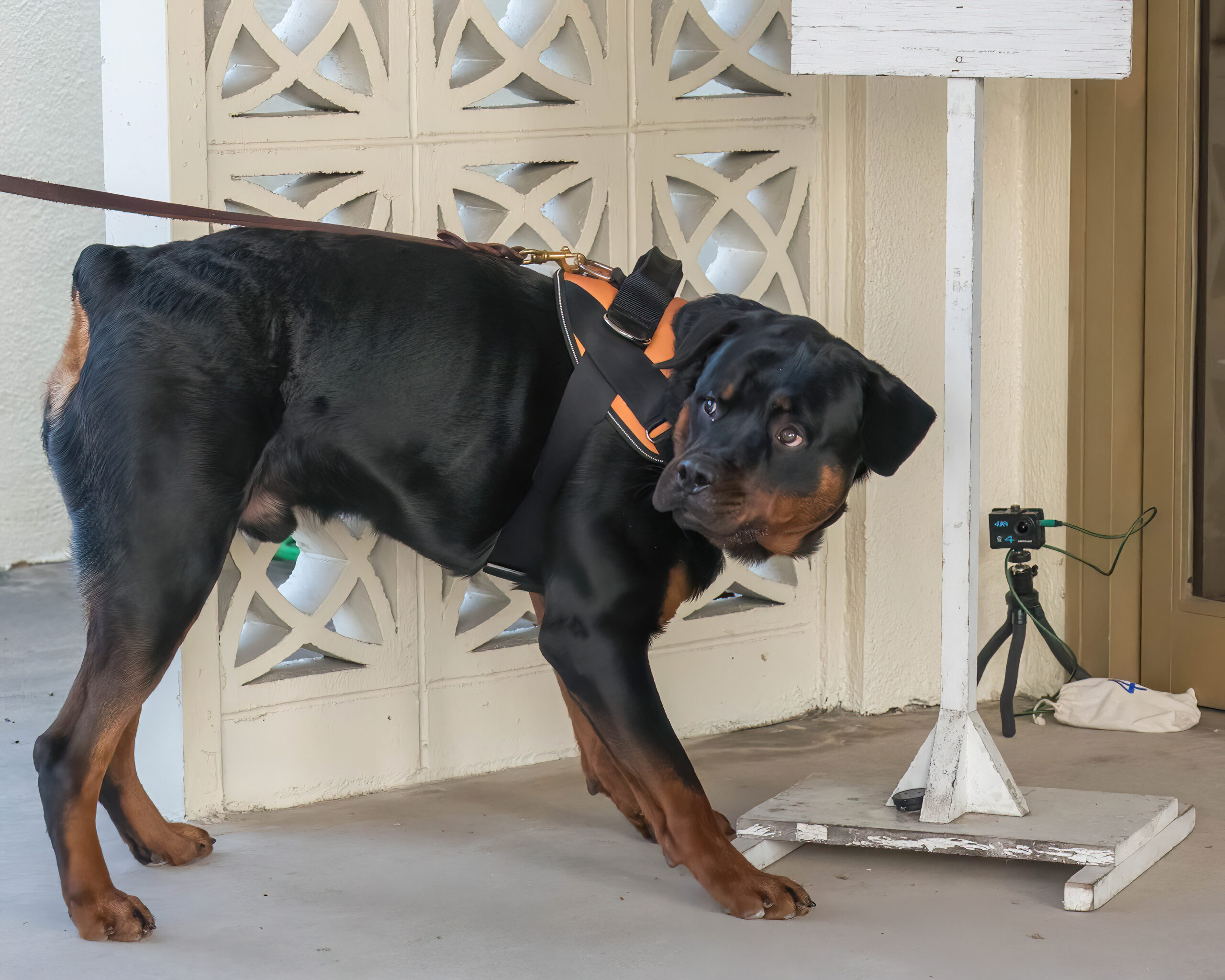
GQ, a 9-month-old male Rottweiler shows Faith where the hide is located

Skye, a female Golden Retriever, being rewarded by Jennifer

Rio, a male Border Heeler, getting his reward at source by Mai-Chi
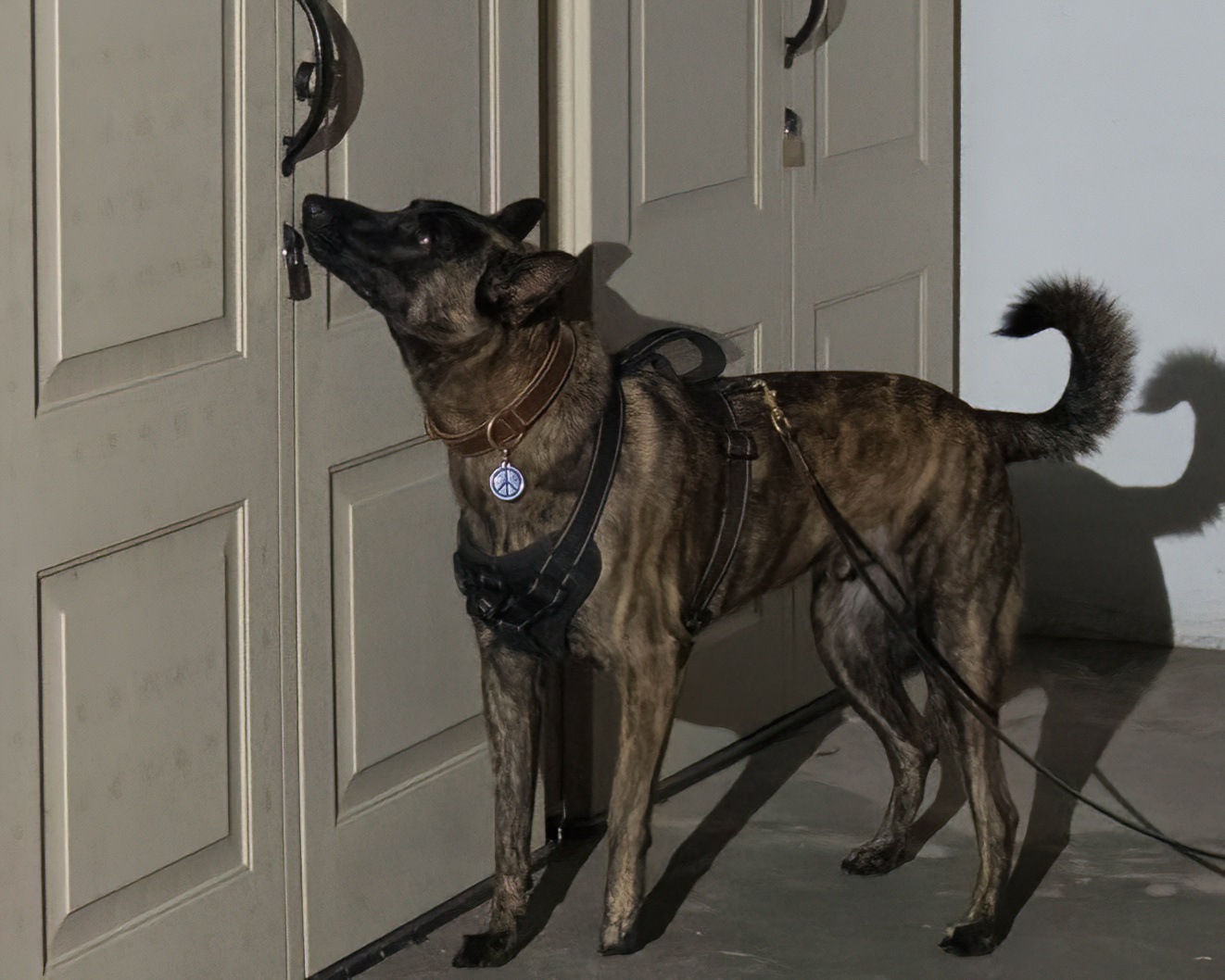
Henk, a 2-year-old male Dutch Shepherd/Malinois mix, at source
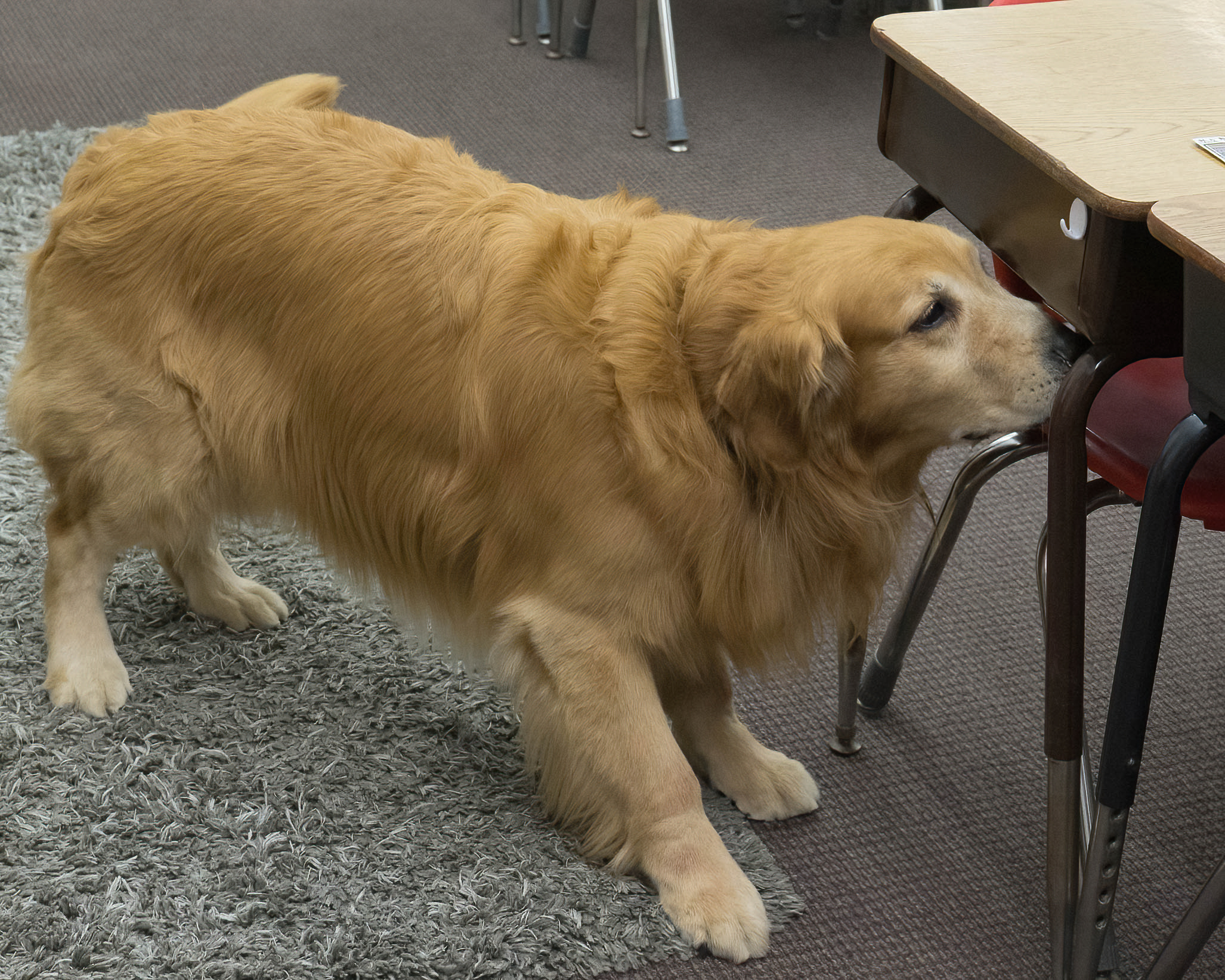
Stoli, a male Golden Retriever, alerting at source

Jessie, a female Golden Retriever, waiting patiently for Gerri to reward at source
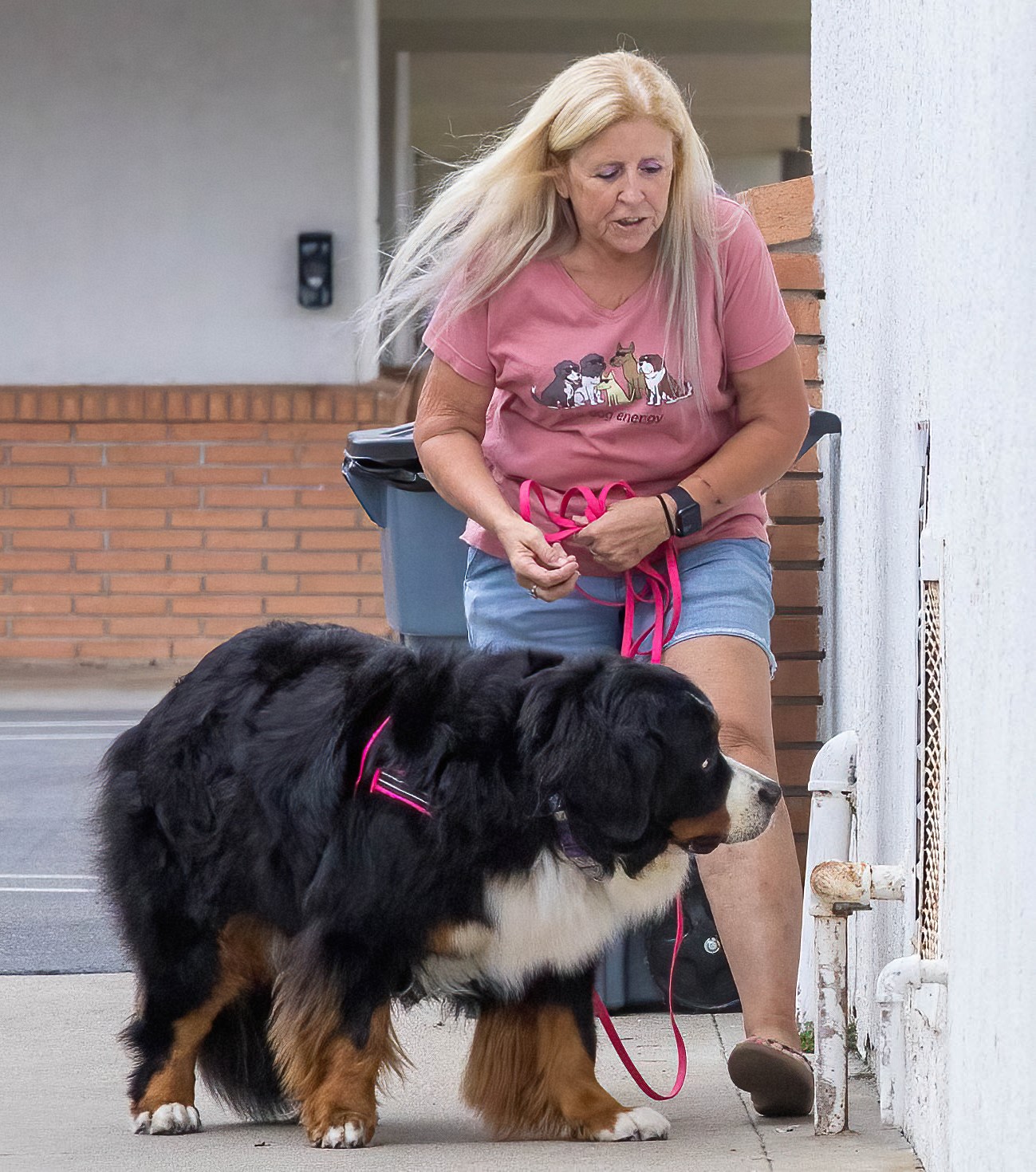
Buttercup, a female Bernese Mountain Dog, taking Tammy to source
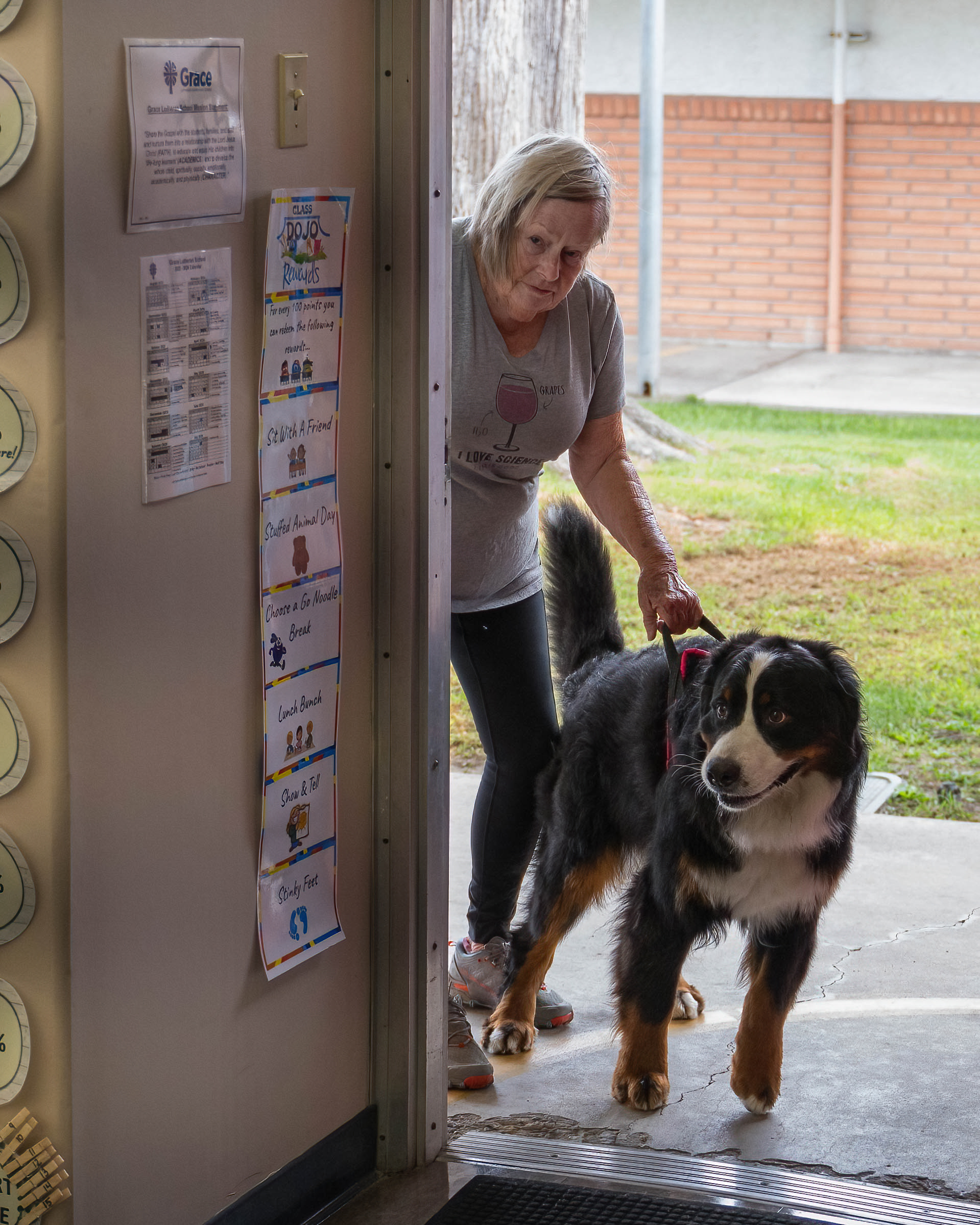
Millie, a female Bernese Mountain Dog, and Kathy, excited to start the search
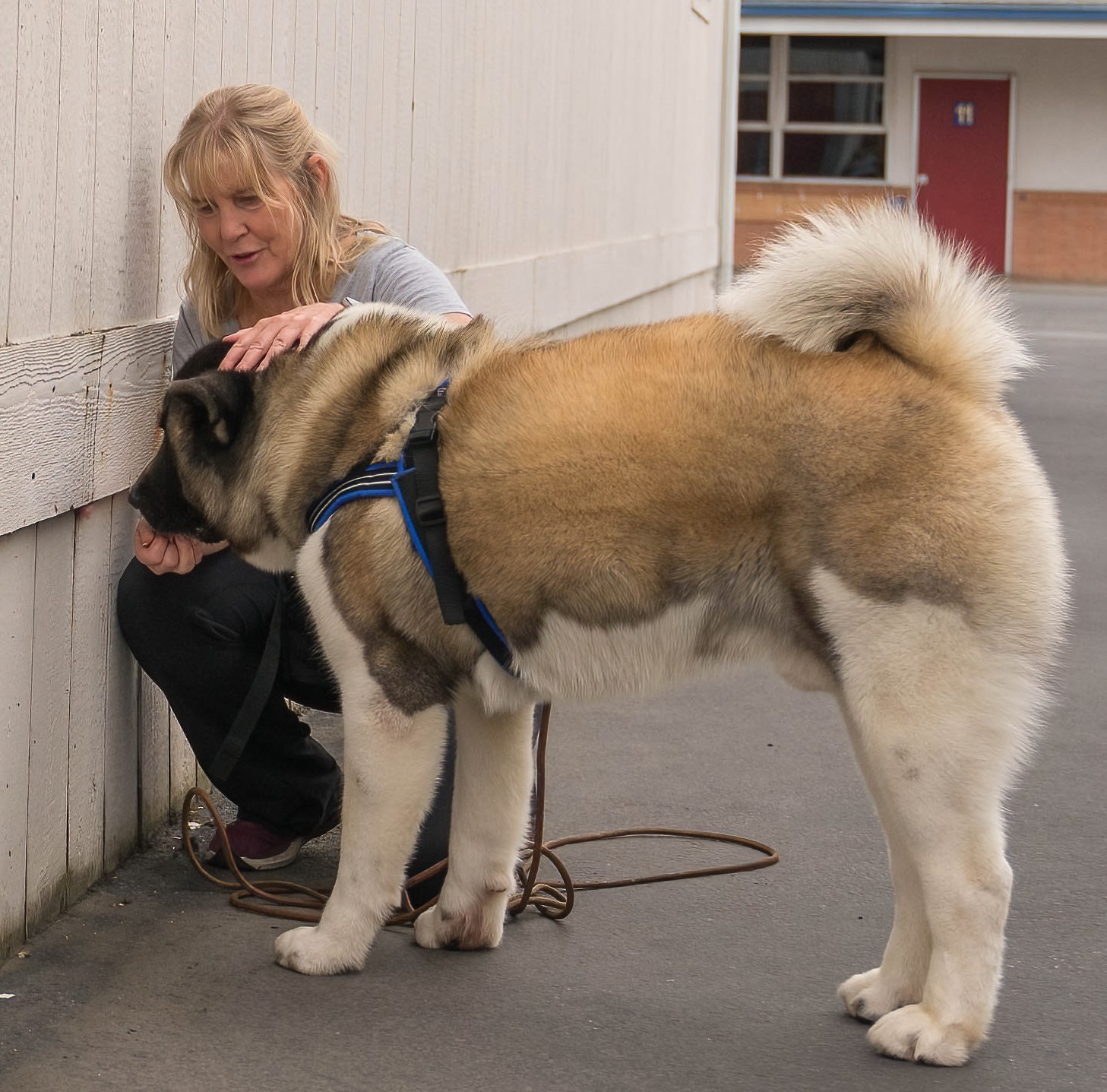
Hondo, a male Akita, gets rewarded at source by Kathy

Cooper, a 10-year-old Border Collie being rewarded after alerting to source
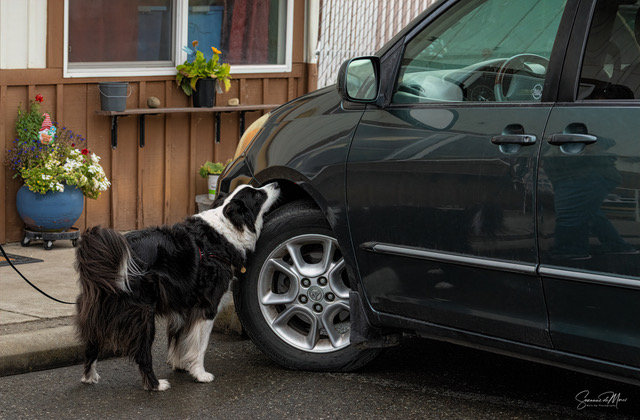
Cooper, a 10-year-old Border Collie at vehicle source

Cooper, a 10-year-old Border Collie being rewarded by Terry at source
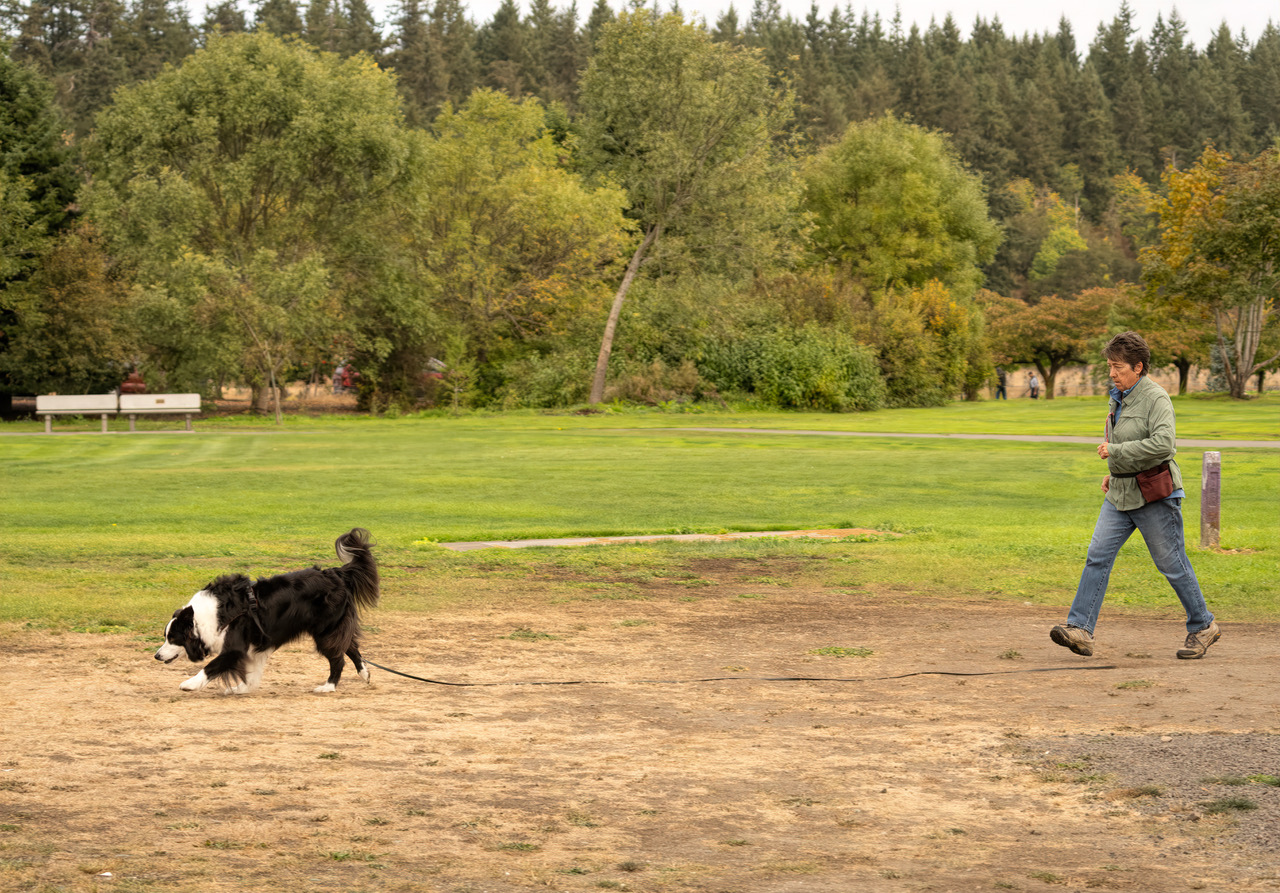
Terry demonstrates poor handling skills (dropping the leash) but still maintains good orientation and pace
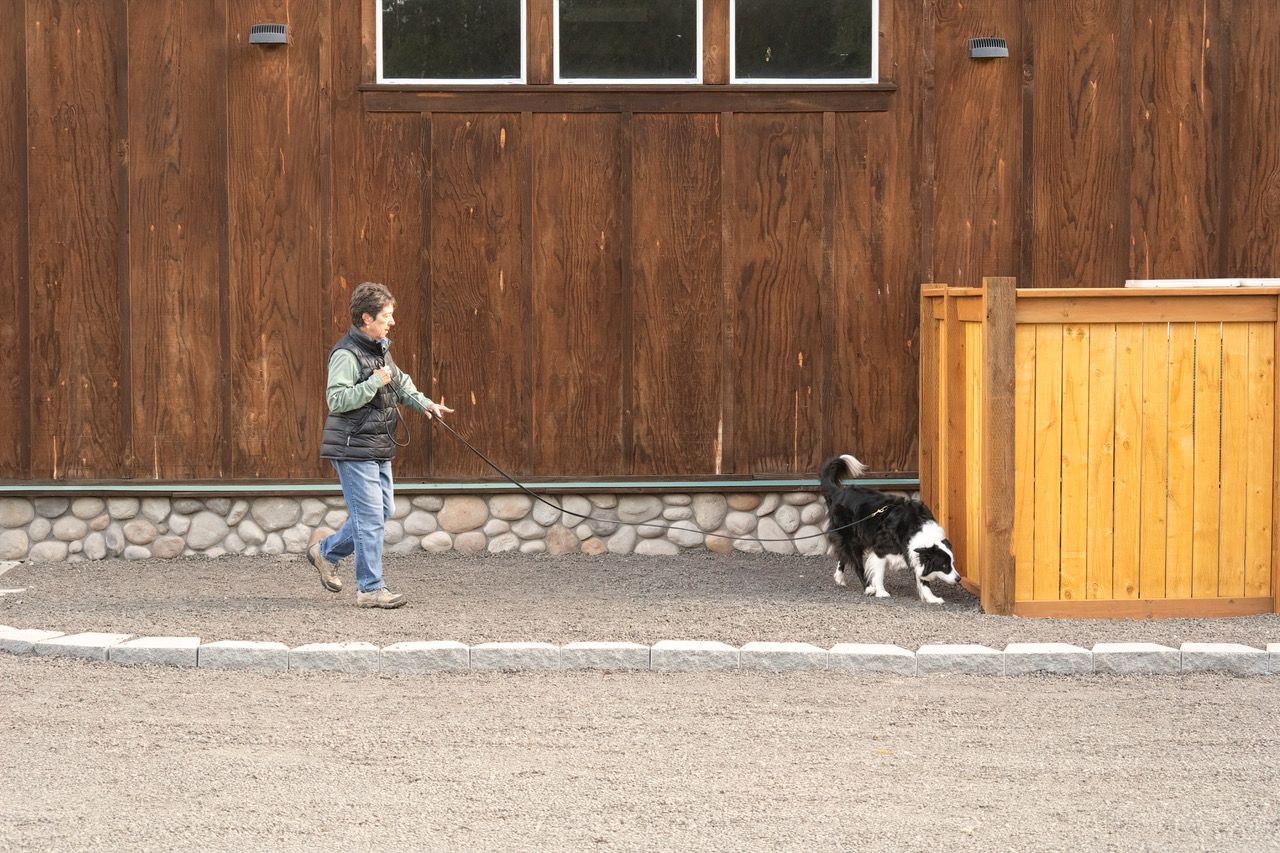
Terry demonstrates good leash handling, orientation and pace, supporting Cooper’s search
Nose Work and Scent Work Sanctioning Organizations
In 2006 three people with dog-detection expertise, Ron Gaunt, Amy Herot, and Jill-Marie O’Brien, came together to form what is now the National Association of Canine Scent Work (NACSW). NACSW was the first to establish philosophies and goals of their organization, rules for competition, titling requirements, and even a trainer certification program. Their goal was to introduce the benefits of Nose Work to dogs in shelters and to the general, dog-owning public. As the saying goes, “The rest is history.”
Since then, others have joined in, offering different rules for competition and titling. For example, currently (2024) NACSW uses three different essential oils while AKC uses four. And while NACSW has vehicle searches, AKC does not; instead, it includes buried hides.
Here are the links to the major organizations in the U.S. and Canada:
National Association of Canine Scent Work (NACSW)
Year of Inception: 2006
NACSW website
American Kennel Club (AKC)
Year of Inception: 2017
AKC Scent Work website
Sport Detection Dogs Association (SDDA) (Canada)
Year of Inception: 2012
SDDA website
United Kennel Club (UKC)
Year of Inception: 2015
UKC Nose Work website
Supplies
Harnesses
Harnesses should not restrict your dog’s movement. You will see many different kinds of harnesses based on what is most comfortable for your dog. The general rule is to use a specific harness for Nose Work and another harness for other purposes. For example, you might use a no-pull harness for walking around the neighborhood, but for Nose Work use a back-clip harness that allows your dog free range of motion. Your instructor will make recommendations and explain why certain harnesses are better than others, but here are a couple examples of popular harnesses used in Nose Work training.

ComfortFlex Padded Sport Harness
Juliusk9 Harness
Leashes/Longlines
Palomine Lines
Essential Oils & Kits
All Good Dogs
Paws 4 Fun
k9 NW Source
The K9 Nose
Virginia Howe
Bait Bags
There are SO many choices available. Just look for one that has a belt that goes around your waist, has a “French hinge” that allows you to open and close it with just one finger or thumb, and is wide enough to get your hand in and out without difficulty or spilling. Bonus features would be extra pockets for poop bags and car keys.

